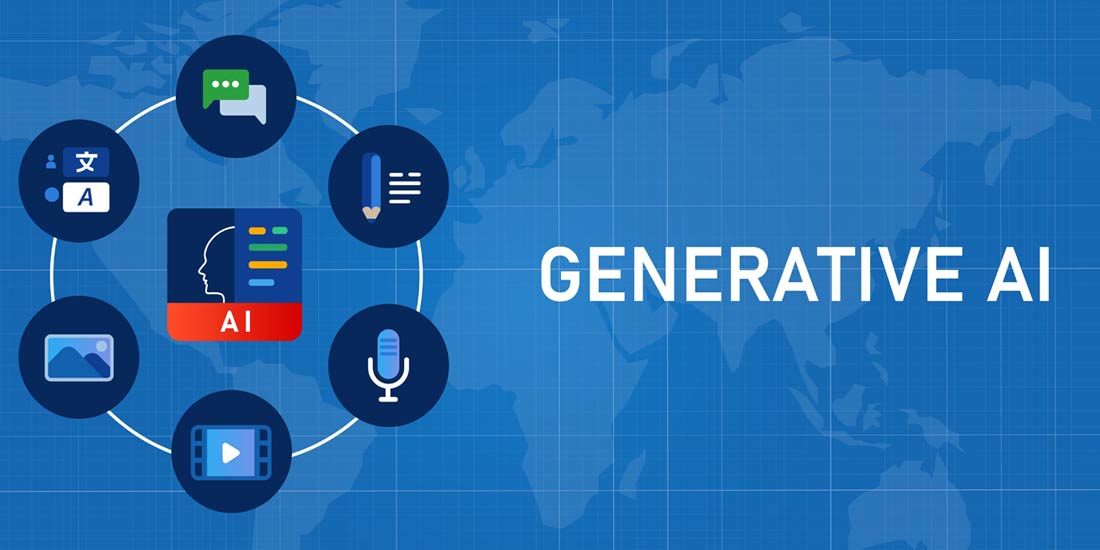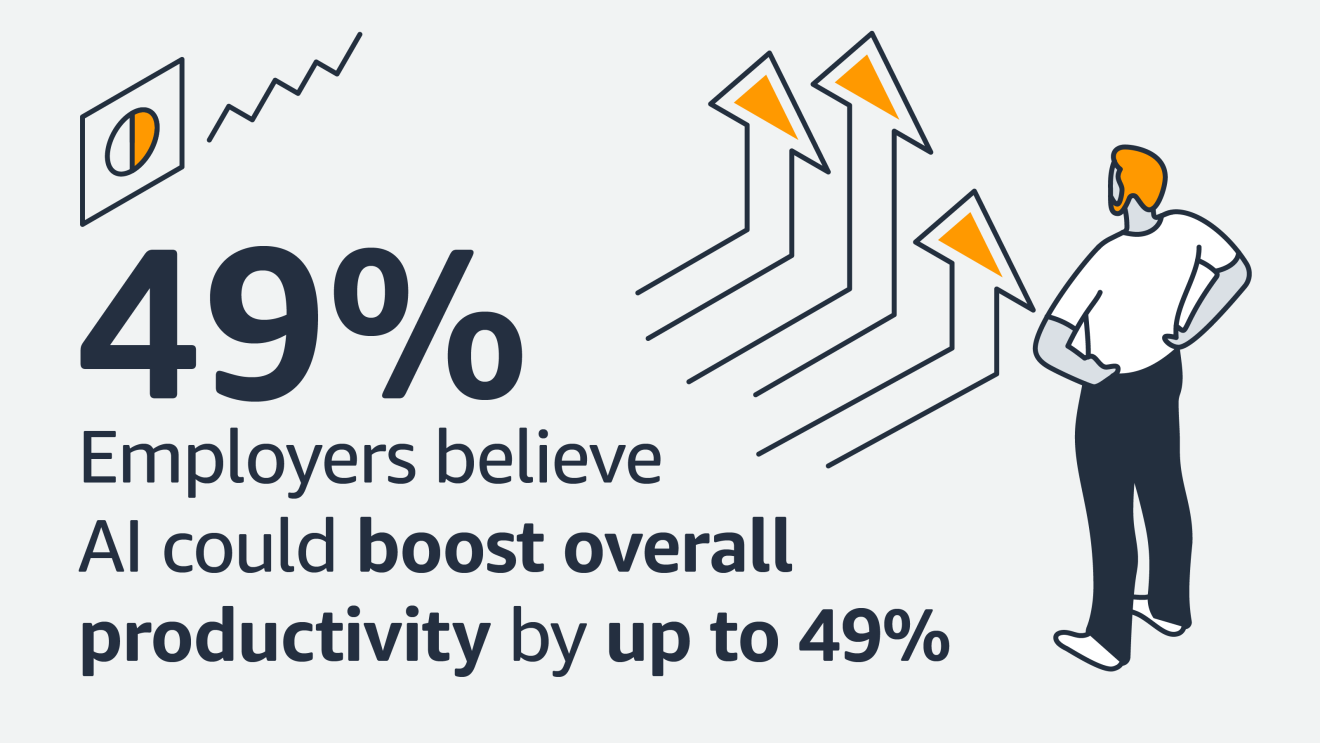Addressing the Reports: Is Amazon Generative AI Workforce Reduction a Reality?
Estimated reading time: 8 minutes
Key Takeaways
- Reports suggest Amazon generative AI workforce reduction is anticipated as AI-driven efficiencies increase.
- Amazon’s CEO has publicly confirmed that generative AI will contribute to reducing corporate headcount in the coming years.
- This trend is expected to particularly impact “knowledge-based and repetitive roles.”
- Beyond reduction, the impact of AI on Amazon jobs involves significant role transformation, augmentation, and the creation of new positions.
- Amazon is actively investing in reskilling and training programs, such as “AI Ready,” to equip employees for the evolving landscape.
- The future of Amazon’s workforce will be shaped by a mix of automation, role redefinition, and skill development.
Table of contents
- Addressing the Reports: Is Amazon Generative AI Workforce Reduction a Reality?
- Key Takeaways
- Introduction
- Amazon’s Extensive AI Landscape
- Examining Reports of Workforce Reduction and Job Cuts
- Amazon’s Official Response: What the CEO and Company Say
- Beyond Reduction: The Broader Impact of AI on Amazon Jobs
- Understanding How Generative AI Changes Jobs at Amazon in Practice
- Future Outlook: Evolution of the Amazon Workforce
- Conclusion
- Frequently Asked Questions
Introduction
Generative AI is rapidly transforming industries globally, promising unprecedented efficiency gains and extensive process automation. This revolutionary technology, capable of creating content, analyzing complex data, and streamlining workflows, is reshaping how businesses operate on a fundamental level. As one of the world’s leading technology and e-commerce giants, Amazon stands at the forefront of this transformation.

With Amazon being a major player and a key focus of public discussion regarding the future of employment in the age of artificial intelligence, its embrace of generative AI naturally raises questions about potential workforce implications. Specifically, recent reports and widespread discussions have centered around the possibility of an amazon generative ai workforce reduction. These concerns stem from the rapid advancements in AI’s capabilities and its increasing integration into core business functions.
This blog post aims to provide a factual overview of the situation based on available information and official statements. We will examine the concerns regarding potential amazon artificial intelligence job cuts, explore the overall impact of AI on Amazon jobs, and delve into details from the amazon ceo statement ai jobs and other official sources. Furthermore, we will look beyond simple reductions to understand how generative AI changes jobs at Amazon in broader, more complex ways. The information presented here is carefully compiled from recent reports and statements originating from reputable sources to offer a balanced perspective on this important topic.
Amazon’s Extensive AI Landscape
Amazon is certainly not new to the realm of artificial intelligence. For years, the company has deeply integrated AI into its operations, leveraging it for a wide array of critical functions. From powering the sophisticated algorithms that drive personalized product recommendations for millions of customers to enabling the voice recognition capabilities of Alexa, and optimizing the intricate logistics of its vast global fulfillment network, AI has been an indispensable tool. Moreover, Amazon’s dominance in cloud computing through AWS has provided a platform for countless businesses to build and deploy their own AI applications, further cementing Amazon’s position as a leader in the AI space.

While traditional AI has been a cornerstone of Amazon’s success, the company has recently embarked on a rapid and significant expansion into the domain of generative AI. This advanced form of AI is distinguished by its ability to create novel content, including human-quality text, realistic images, and even functional code, rather than merely analyzing or classifying existing data. Amazon’s strategic push into generative AI is dual-focused: aiming to enhance internal efficiency by automating complex tasks and streamlining operations, and simultaneously developing new, innovative external services that can be offered to its massive customer base and AWS clients.
Research highlights Amazon’s pivotal position in this evolving landscape:
“Amazon, as one of the world’s largest employers and a technological powerhouse, finds itself at the center of the debate around generative AI’s impact on jobs… Amazon is rapidly expanding its efforts in generative AI—a technology capable of creating text, images, code, and more—to improve both internal operations and external services.”

This extensive and accelerating adoption of sophisticated AI technologies, particularly generative AI, naturally prompts crucial questions about its implications for the workforce. These technological shifts inherently raise concerns and discussions regarding the broader impact of AI on Amazon jobs, moving the conversation from theoretical possibilities to concrete potential outcomes for employees.
Examining Reports of Workforce Reduction and Job Cuts
In recent months, media coverage and analyses from various sources have increasingly suggested that Amazon’s substantial investment in and rapid deployment of generative AI technologies are expected to precipitate notable changes within its workforce structure. This is the core issue behind the discussions surrounding amazon generative ai workforce reduction.
According to reports, there is a clear expectation:
“…the rollout of generative AI solutions and automated agents is anticipated to reduce the total corporate workforce over the next few years as AI-driven efficiencies materialize.”

These reports further specify that amazon artificial intelligence job cuts are specifically anticipated in certain areas, particularly among roles characterized as “knowledge-based and repetitive.” These are positions where tasks involve processing information, generating standard content, or performing routine operations that AI is becoming increasingly capable of handling autonomously or semi-autonomously.
However, it is absolutely essential to introduce nuance into this discussion. Recent research and reporting underscore that:
“…it is essential to distinguish between layoffs due to broad economic restructuring—which Amazon has experienced in recent years like many tech companies—and those explicitly resulting from AI automation.”
This distinction is crucial because Amazon, like many large corporations, has undergone various workforce adjustments driven by macroeconomic factors, shifts in consumer demand, and post-pandemic recalibrations. While AI’s increasing capabilities play a role, not all workforce reductions at Amazon are solely attributable to automation. Nevertheless, the analysis consistently concludes that while not all reductions are solely caused by AI, the technology *is* identified as a significant driver of upcoming workforce changes. This means that as generative AI becomes more integrated and its efficiency gains materialize, a direct impact on the size and composition of the corporate workforce is expected, reinforcing the core discussion around potential amazon generative ai workforce reduction in the context of achieved efficiencies.
Amazon’s Official Response: What the CEO and Company Say
Amidst the reports and speculation, Amazon’s leadership has provided a degree of clarity regarding the company’s perspective on the impact of generative AI on its workforce. A key piece of information comes from the amazon ceo statement ai jobs.
Specifically, it has been detailed that:
“Amazon CEO Andy Jassy has publicly acknowledged that generative AI will play a direct role in reducing the company’s total corporate headcount in the coming years.”
This is a significant confirmation directly from the top leadership, indicating that the notion of a generative AI-driven reduction is not merely external speculation but an acknowledged factor in Amazon’s future workforce planning. According to reporting on his statements, Jassy frames this expected change as a “natural evolution.” He suggests that generative AI, by enabling greater efficiency and automating tasks that were traditionally performed by human employees, is a key part of the company’s ongoing operational improvements.
However, Amazon’s official message is not solely focused on reduction. The company also emphasizes a complementary strategy. Research indicates that:
“At the same time, Amazon emphasizes its ongoing commitment to reskilling and retraining workers for roles connected to AI development, deployment, and oversight.”
This suggests a dual approach: recognizing that AI will automate some existing roles while simultaneously investing in equipping the current workforce with the necessary skills for the new roles and tasks that emerge from an AI-integrated environment. The official perspective, therefore, balances the acknowledgment that AI will lead to some degree of reduction via efficiency gains with a stated commitment to adapting and developing the workforce for the AI-driven future. This nuanced stance is central to understanding Amazon’s strategy regarding the intersection of AI and employment.
Beyond Reduction: The Broader Impact of AI on Amazon Jobs
While potential workforce reduction is a significant point of discussion, the true impact of AI on Amazon jobs is far more expansive than just simple job cuts. AI, and generative AI in particular, is fundamentally changing the nature of many existing roles and simultaneously creating entirely new categories of work within the company.
Based on available information and analysis, here’s how AI is reshaping jobs at Amazon:
-
- Automating Repetitive Knowledge Work: AI is increasingly capable of performing tasks such as data entry, certain aspects of customer service inquiries that follow predictable patterns, and the generation of basic content. These are tasks that involve processing large volumes of information or executing routine procedures. AI automation in these areas means that while some specific tasks may be taken over by machines, it can potentially free up human employees from tedious work.
- Enhancing Productivity: For many roles, AI acts as a powerful tool to augment human capabilities. AI assistants can help engineers by suggesting code snippets or identify bugs. A marketing specialist could use AI to generate multiple variations of ad copy for testing. A customer service representative might leverage AI to quickly pull up relevant information or summarize previous interactions. This means that instead of replacing employees, AI helps them perform complex work faster, more effectively, and with greater accuracy, ultimately boosting overall productivity.

-
- Creating New Job Categories: The development, deployment, and management of sophisticated AI systems require specialized human expertise. This is leading to the emergence of entirely new job categories at Amazon. Roles related to AI model development, ensuring the quality and performance of AI outputs, and overseeing the ethical implications and fairness of AI systems are becoming increasingly crucial. These are positions that did not exist, or were far less prevalent, before the widespread adoption of advanced AI.

- Driving Demand for AI Skills: The shift towards an AI-driven workforce necessitates that employees develop new skills. This is driving a strong demand for individuals proficient in AI-related areas. Recognizing this, Amazon is actively promoting and offering extensive training and upskilling opportunities to its workforce. A notable example is their “AI Ready” program, which aims to equip both technical and non-technical employees with foundational AI knowledge and practical skills needed to work alongside AI tools and systems.
Therefore, while the specter of reduction exists for certain tasks and roles, the broader narrative of AI’s impact at Amazon involves a significant transformation of *how* work is done, a shift in required skill sets, and the opening up of new career paths related to AI itself.
Understanding How Generative AI Changes Jobs at Amazon in Practice
Moving from the conceptual to the practical, Amazon’s increasing integration of generative AI is tangibly reshaping how many employees perform their daily tasks. It’s becoming clearer to see how generative AI changes jobs at Amazon not just in theory, but in visible, day-to-day work processes.
The changes manifest in several ways:
-
- Automation and Phasing Out: As mentioned earlier, some roles or significant portions of roles are becoming subject to automation. Tasks involving repetitive data processing, generating standard reports, or handling routine customer inquiries are examples where AI can take over, leading to certain positions potentially being phased out or significantly altered in scope.
- Role Augmentation: For a large segment of the workforce, generative AI tools are becoming powerful assistants. This is where AI “augments” human capabilities. For instance, a software engineer might use an AI tool to suggest code snippets or identify bugs. A marketing specialist could use AI to generate multiple variations of ad copy for testing. A customer service representative might leverage AI to quickly pull up relevant information or summarize previous interactions. In these cases, the AI tools taking over routine work so employees can focus on more complex, creative, or strategic tasks that require human judgment, empathy, or higher-level problem-solving.

- Creation of New Roles: The very existence and operation of sophisticated AI systems necessitate new kinds of human expertise. This includes roles like “prompt engineers,” who specialize in crafting effective instructions for AI models to get the desired outputs; experts in “AI ethics,” who work to ensure AI systems are fair, transparent, and unbiased; and professionals in “AI operations,” who manage, maintain, and troubleshoot the complex infrastructure behind AI services. These roles represent burgeoning career paths directly created by the rise of advanced AI.
Amazon’s response to these seismic shifts includes a strong emphasis on internal training. The company has committed significant resources to upskilling its workforce. This push for internal training is substantial in scale:
“…millions of employees and customers provided with AI skills education in 2024 alone…”

This demonstrates that Amazon is not passively observing the changes brought by AI but is actively attempting to prepare its vast workforce for the future, ensuring employees have the competencies needed to thrive in an environment where collaboration with AI is increasingly common.
Future Outlook: Evolution of the Amazon Workforce
Looking ahead, it is clear that Amazon’s workforce will continue to evolve significantly as the company further integrates and leverages artificial intelligence, particularly generative AI. The trajectory suggests an ongoing period of adaptation and transformation rather than a static state.
Based on current reports and statements, the future outlook includes several key components. Firstly, the expectation remains that efficiency gains are expected to reduce certain corporate roles, particularly those that are highly routine or data-intensive, as AI automation capabilities mature and are deployed more widely across the organization.
Simultaneously, however, the landscape is also characterized by growth in other areas. As noted in Amazon’s own communications and industry analysis, new opportunities connected to AI deployment are also on the rise. These opportunities span roles directly involved in AI development and maintenance, as well as positions that require human oversight, ethical consideration, and strategic application of AI tools.
Amazon’s official stance points towards this dynamic scenario, emphasizing that the company is undergoing an “ongoing transformation”. This language suggests that the changes are not a one-time event but a continuous process of adapting the human workforce alongside technological advancements.

Ultimately, the future of Amazon’s workforce is anticipated to be a complex mix of job reduction, role redefinition, and skill development shaping the future workforce. It highlights a shift towards a workforce that is increasingly augmented by AI, requiring different skills focused on collaboration with intelligent systems, higher-level cognitive functions, and areas where human strengths like creativity, critical thinking, and emotional intelligence remain irreplaceable. The pace and specifics of this evolution will likely depend on the speed of AI deployment and the success of internal training initiatives.
Conclusion
In examining the reports and official statements, it becomes clear that the reality behind ‘Amazon generative AI workforce reduction‘ is indeed nuanced, extending beyond a simple yes or no answer. There are clear signals and direct statements from leadership that generative AI will play a role in reducing the total corporate workforce in coming years, primarily driven by the pursuit of greater efficiencies through automation.
However, the broader impact of AI at Amazon is far more expansive and complex than mere headcount reduction. While the potential for job cuts (amazon artificial intelligence job cuts) in specific areas exists, particularly in repetitive knowledge work, the narrative also includes significant elements of role redefinition, augmentation, and the emergence of entirely new job categories directly related to AI development and management.
Amazon’s official stance, as articulated in the amazon ceo statement ai jobs and company initiatives, strikes a balance between acknowledging the efficiency gains expected from AI automation and demonstrating a commitment to investing in the existing workforce through extensive reskilling and retraining programs like “AI Ready” (AWS Executive Insights). This suggests a forward-looking strategy aimed at adapting the workforce to the evolving technological landscape.
Understanding how generative AI changes jobs at Amazon involves recognizing that it is both reducing some tasks and roles while simultaneously transforming others by augmenting human capabilities and creating demand for new skills and positions. The transformation is ongoing, and as various sources indicate, it “is as much about changing work as it is about eliminating it.” Therefore, while some reduction is anticipated, the more significant and widespread impact of generative AI at Amazon is likely to be the fundamental reshaping of the nature of work itself.
Frequently Asked Questions
- Q: Is Amazon definitely laying off a large number of employees *because* of generative AI?
- A: While Amazon’s CEO has stated that generative AI will contribute to reducing corporate headcount over time due to efficiency gains, it’s important to distinguish this from widespread layoffs solely caused by AI. Workforce reductions can also occur due to broader economic factors or business restructuring, which Amazon has also experienced. AI is seen as a factor driving future changes and potentially some reductions, but it’s part of a larger picture of automation and transformation.
- Q: Which types of jobs at Amazon are most likely to be affected by generative AI?
- A: Reports suggest that roles involving “knowledge-based and repetitive” tasks are most likely to be impacted by automation driven by generative AI. This could include certain administrative roles, data entry positions, or parts of customer service that handle predictable queries.
- Q: Is Amazon doing anything to help employees whose jobs might be affected?
- A: Yes, Amazon has publicly stated a commitment to reskilling and retraining its workforce. They are investing in programs, such as the “AI Ready” initiative, to equip employees with the skills needed for roles in AI development, deployment, oversight, and jobs augmented by AI. The goal is to help employees transition within the company.
- Q: Does this mean AI will only reduce jobs at Amazon?
- A: No. The impact is multifaceted. While some tasks/roles may be automated, generative AI also enhances productivity in many roles by acting as a tool (augmentation), and it is creating entirely new job categories related to developing, managing, and ensuring the ethical use of AI systems.






